Hardtail bikes: what are they and how to choose them?
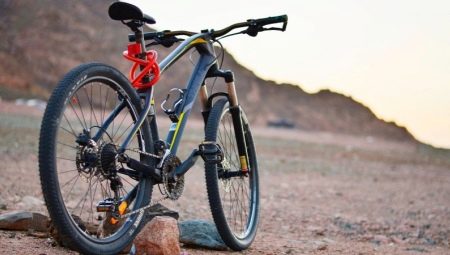
Novice cyclists who are in the process of buying their first bike often come across the incomprehensible term "hardtail". However, even some "oldies" of the bicycle industry are also in the dark, how this variety differs from the rest, and for whom it is recommended. The answer to this question is pretty simple.
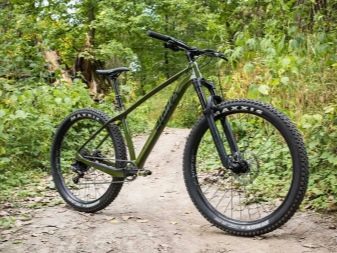

What it is?
Hardtail bicycles are, in principle, ordinary two-wheeled vehicles, but with a special frame without rear suspension. By the way, hardtail is the name of the frame, formed from the words hard and tail, which literally means “hard tail”. This type of bike allows you to install two types of forks: rigid, which increase speed and reduce weight, as well as shock-absorbing, which increase the rider's comfort. The second variation, however, is only used at the front of the bike. If you compare a hardtail bike with a conventional two-suspension bike, then the number of advantages will be very numerous.
Today it is the most common and can be both mountain and tourist, and hybrid. Quite often, a hardtail is used for freeriding, since the missing rear suspension does not have much effect, but it allows you to move at a higher speed. Manufacturers try to justify the desires of cyclists who ride in different styles, and therefore modify the basis, making it more convenient for performing tricks... For example, for urban freeriding, a more reliable frame is created, equipped with a lowered seat and a small steering angle.If the bike is intended for street freeriding, the handlebar angle is raised to make tricks more comfortable on flat surfaces.

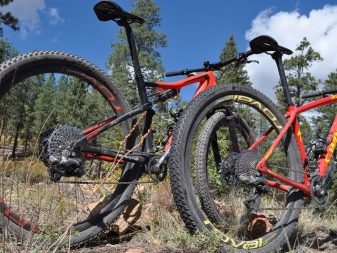
Coming back to the front fork, it should be mentioned that depreciation has several varieties. Rigid type is a classic solution with low cost, reliability and ease of manufacture. Typically, this is the fork that is used to equip most of the available bicycles. Spring suspension forks are also fairly common. But, it wears out quickly, and therefore is usually chosen for children's bicycles. It cannot be called the most comfortable.
The Elastomer Spring Forks are simple in design, but provide the rider with the comfort they need. Its disadvantages include quick wear and tear and inability to use in cold weather. An air suspension fork is considered the most successful for quiet riding without much extreme. It is lightweight and well cushioned.
In addition, oil-air or oil-spring forks are used for hardtails.
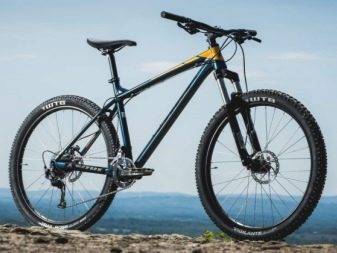
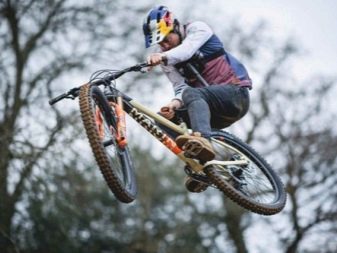
Advantages and disadvantages
Hardtails versus full suspension bikes have a more affordable price, as well as easier maintenance. They also benefit from the weight and usability of the pedals. The main disadvantages in this case are the difficulties when "meeting" obstacles on the slopes, since there is no constant interaction of the rear wheel and the ground surface.
The lighter weight of the hardtail is provided by the presence of shock absorption on only one wheel, which in turn contributes to the development of much higher speed. However, when traveling on hills or paths covered with pebbles or gravel, this type of frame will only be a minus. The cyclist will be constantly shaking, and in the event of a collision, even with a small obstacle, everything can end in injury to the rider.
Experts point out a number of advantages that bicycles with hardtail frames have. Vehicle starts quickly and easily, but much less energy is spent. The rear triangle does not shift, which is especially pleasing for heavy cyclists.
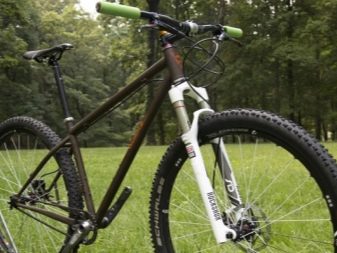
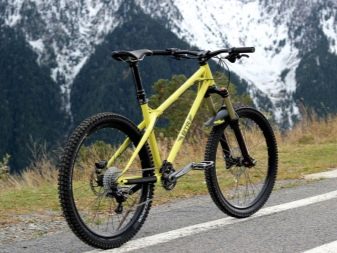
While double-hinged frames need to be inspected and replaced every six months for worn bearings, the hardtail does not need such careful maintenance. In addition, even in the event of a breakdown, replacement is much easier and cheaper.
It is not difficult to install a rear rack on this bike, but remember that in trips, the entire "tail section" in any case will be entered. In addition, it is important to mention that more riding skills are required to use hardtails, and more frequent repairs are likely. In general, it is important to mention that when using such structures on roads with pits and irregularities, there is a negative effect on the human body, for example, the joints of the arms and legs, as well as the male prostate.
The presence of any health problems or peculiarities of the body implies a safer use of the two-suspension structure.


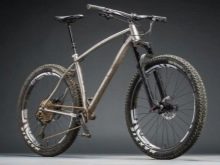
Species overview
While all hardtail bikes look pretty similar, there are quite a few varieties of two-wheeled vehicles, each with its own specific features. They are intended, as a rule, for differing subspecies of sports and specific purposes.
Freeride
Freeride is considered to be the most extreme way to travel on a mountain bike, and therefore it requires the greatest reliability. Hardtails are rarely used for this purpose, but those that are present have a rigid, short frame, a high-quality shock-absorbing front fork and, as a rule, a ten-speed transmission.

Enduro
Bicycles used in enduro, are subjected to endurance tests, and therefore must have high strength. For structures, reliable frames are used made of lightweight material, for example, carbon fiber or special steel. In addition, there is a longer wheelbase for balance. The front fork is damped with 110 to 150 millimeters of travel. The drivetrain is designed to keep the bike in contact with the road to a minimum, and the wide handlebars make the steering more comfortable. The brake on enduro bikes is hydraulic.
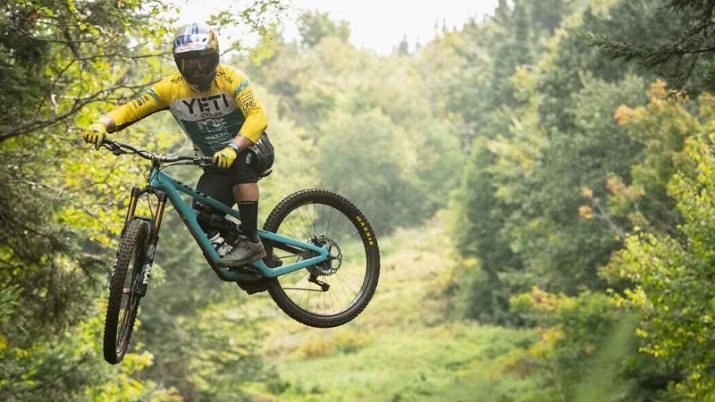
Biker cross
Forcross hardtail bikes, also often referred to as bikercross, must be able to tackle a lot of obstacles. Therefore, structures are selected for the discipline, the weight of which does not exceed 13 kilograms, and the fork travel reaches 140 millimeters. The pedals should be contact, since this property makes it possible to accelerate better.

Trail
Trail bikes are equipped with a rigid frame with a shortened rear triangle and wide wheels. The bike weighs only 10 kilograms thanks to the fact that all unnecessary parts have been removed. For example, some models don't even have a saddle.

Cross country
A hardtail bike that can be used for cross-country racing, also known as cross-country, has a lighter frame and wider tires. Additionally, the device has a mud protector and a narrowed saddle. Special designs are also used to perform tricks on trampolines installed on sandy or unpaved surfaces. These bicycles have larger wheels, wider tires, and usually a single-speed drivetrain.
To reduce weight for better trick performance, very often the brake is removed at the front, and again the front fork is made more rigid.

Road
A two-wheeled device that can be used for city cruising is similar in many ways to an X-country bike, but is more durable. For example, a more reliable material is used for the bicycle frame, and the connecting rods allow you to slide along the railings or pipes. Usually, for street bikes, 24-inch wheels are chosen.
Road hardtails allow you to move as efficiently as possible on asphalt roads. Their narrow wheels are covered with special tires, and the steering wheel is replaced with a special sports model of the "horn" type. Besides, the frame is made of lighter material.
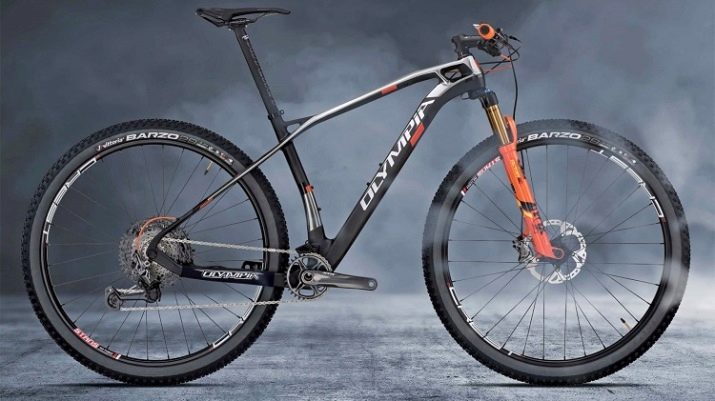
Tourist
Touring bikes of this type are equipped with wheels of 28 or 29 inches. The frame has a longer length, and in addition, such necessary travel parts as headlights or a trunk are mounted.
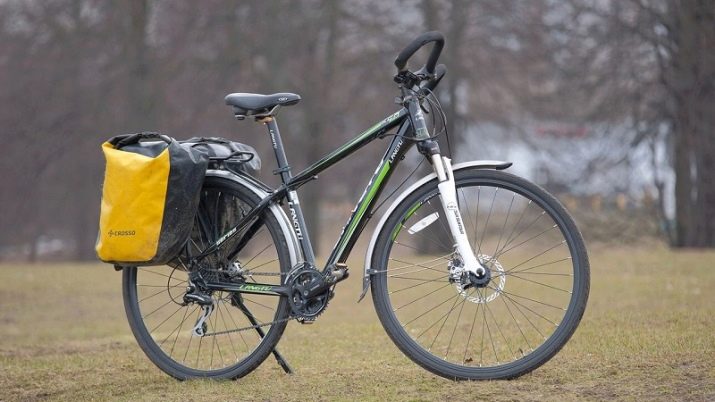
Urban
Urban hardtails, which are the most budgetary ones, are also equipped with additional elements.
In addition to all of the above, there are also hybrid devices.
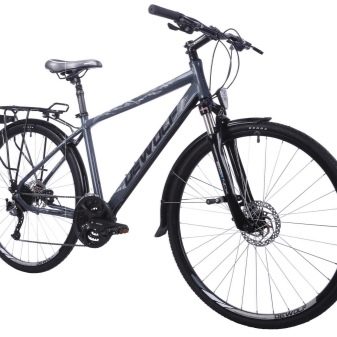
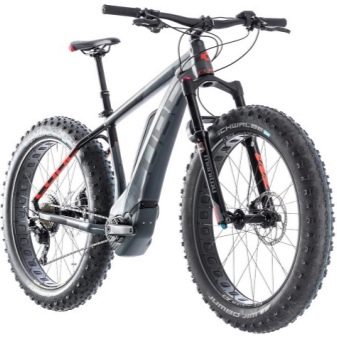
Manufacturers
Proven models of hardtail bikes that can even be used for freeriding, sold by the Specialized brand. Low-cost analogs of the design can be found at the Stark company, which is a joint "brainchild" of Germany and Russia. Enduro devices are recommended to be purchased from Marin, and the Format and Giant brands are responsible for the production of Forcoss bicycles.
Forcross bikes are made already the above Stark, as well as Trek and Mongoose. In principle, the same companies are engaged in the production of bicycles with a hardtail frame for other disciplines.
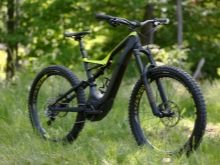
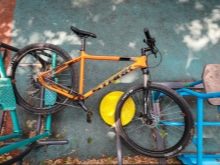

Selection Tips
To choose the right hardtail, you just need to decide for what purpose it will be used. Further, it is enough just to decide on the manufacturer by reading the reviews and referring to your own experience, and then study the available models. Usually in the description of the bike, the purpose of the frame is immediately indicated.Otherwise, the choice of a two-wheeled hardtail unit is carried out in the same way as a conventional one. When hesitating between a hardtail and a full-suspension bike, you need to remember the pros and cons of each category.
Hardtail costs less, sometimes even almost twice. In addition, it will drive much faster. The double suspension is more difficult to carry, since its weight exceeds the first type by about 1–6 kilograms. However, if we talk about convenience, then double suspension wins... Judging by the reviews, its appearance is much more attractive.
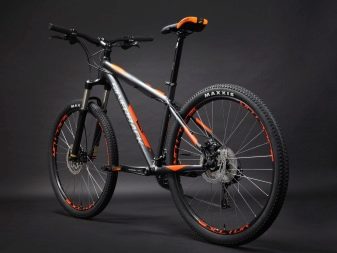

In general, having a small amount of money, you should, of course, give preference to the hardtail.
For what a hardtail is capable of, see the next video.








